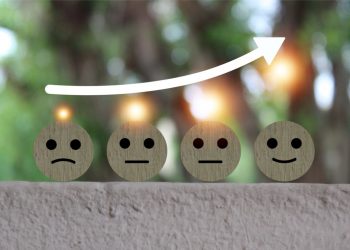You’ve stirred our passion. You’ve inflamed our desire. Oh, wait. You didn’t think we were talking about the protagonist of that steamy novel hidden on countless Kindles, did you? Heavens, no. This is about gray, small g. The color. We can’t get enough of it — all 50 shades or so.
Gray has shown a dramatic increase in popularity since 2010 and particularly in the last year, the National Kitchen & Bath Association reports. In fact, the color is used in 55 percent of the kitchens and 56 percent of the bathrooms decorated by the designers who make up the group’s membership.
It’s a grown-up hue that lends a sophistication consumers crave, the association says.
Gray is more than just a mixture of black and white, says Sonu Mathew, an interior designer who works on the color team that curates the palette for paint maker Benjamin Moore & Co. Gray can have undertones of red, blue, green or purple, which she said makes it “very complex,” even mysterious.
That characteristic makes gray work well with many colors, Mathew says. Gray gives the eye a chance to rest, she explained, so we can appreciate the other colors in the room more.
Interior designer Amy Douglass believes gray’s ability to play well with others — even other neutrals such as creams, tans and white — is a large part of its popularity. It’s similar to black in that regard but not as stark, says Douglass, owner and senior designer at the Interior Design Studio in Medina, Ohio.
“It’s just a little softer,” she says. “It’s not as dramatic as black and white.”
Douglass has paired gray with yellow and white in a sunroom, and she’s now using a bluish gray in a kitchen she’s designing. It works well with the slate on the room’s fireplace and the maple of its cabinets, she said, as well as the gold, tan and rust in the adjacent great room.
North Canton, Ohio, designer Robin Brechbuhler incorporated gray liberally in a Jackson Township, Ohio, home she decorated for Elizabeth Hoover, chair of the Herbert W. Hoover Foundation and great-granddaughter of Hoover Co. founder W.H. “Boss” Hoover. Brechbuhler said the color choice was inspired in part by the metal of a couple of vintage Hoover vacuum cleaners displayed in the home.
The neutral palette throughout the house blends grays with beiges and browns, a quiet background for bursts of color.
In a sitting area off the kitchen, for example, pillows in cream, orange and rust brighten a dark gray sectional. Gray grass cloth panels break up the dark taupe wall in the media room, and a wall covering made from chips of gray ceramic and glass makes one of the bathrooms sparkle.
Brechbuhler loves the way gray sets off the colors of the antique Hoover displays around the house.
“It’s a wonderful neutral,” she says. “It’s sort of taken the place of beige.”
Gray used to be considered cold and masculine, Benjamin Moore’s Mathew said, but its use in fashion and other products such as cars has given us a new appreciation for it. When we see gray used beautifully in, say, a silk blouse, we start to break those old associations and see new possibilities for the color.
Using gray in our area, however, takes a bit of care, Akron interior designer Cynthia J. Hoffman cautioned.
“We’re in Northeast Ohio. Not much sunshine,” she says. To keep the interior from looking as dull as the winter landscape, gray needs to be accompanied by plenty of light, she said.
Hoffman outfitted a loft for one client with a charcoal floor and chairs covered in charcoal mohair, but she played them against ivory earth-plaster walls that lend warmth. Natural light bathes the space, and “that room feels beautiful, whether it’s winter or summer,” she says.
No natural light? Use plenty of artificial light, she suggested. But make sure it’s dimmable, so you can change the mood of the room to fit the way you’re using it.
Douglass and Hoffman say it’s also important to pay attention to the undertones when choosing a gray. Use a warm gray with warm colors, a cool gray with cool ones.
Hoffman particularly likes the way gray makes bright colors stand out. She showcased one client’s vibrant artwork by using a gray hardwood floor, gray carpeting and a black sofa to form a backdrop, and then brought pops of color into the room by choosing dining chairs in different hues pulled from the art.
Mathew says gray can also be used successfully in a monochromatic palette, but the trick to pulling that off is contrast. Incorporate lighter and darker shades of gray “so your eye can move around the room,” she says.
It’s not necessary to immerse yourself in gray, however, to be part of the trend. If you just want to experiment with the color, Mathew suggested using it as an accent, perhaps on a piece of furniture, a door or the inside of a bookcase.
The amount of contrast you use on the walls is important, too. If you want a more energetic room where you notice the individual colors, use shades of gray with a good deal of contrast. If you prefer a more relaxing atmosphere, dial the contrast down.
It all depends on what you like, how you use your space and how you want to feel in it, she says.
As with any paint color, try gray out in a room first. Mathew recommended painting a large sample on a piece of poster board or foam core and moving it around the room, seeing how it looks in the darkest corner and the brightest spot. Light affects how we perceive color, so the lighting of your room might make a gray look very different from the one you fell in love with in the paint store.
The good news is that no matter what color you love, there’s a gray you can use with it, Mathew said. You don’t have to abandon your color scheme and start from scratch just to be in fashion.
It’s more important that you love your colors, she says.
©2013 Akron Beacon Journal (Akron, Ohio)
Distributed by MCT Information Services











